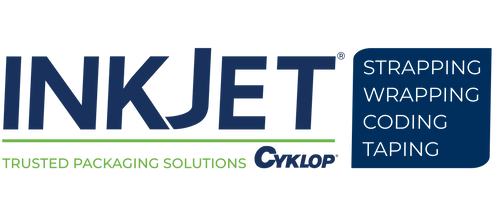Finding the Best Labeling Machines With Date Coders | InkJet Product Spotlight
A canvas for important product information, traceable codes, brand designs, and more, labels are found on everything from beer bottles and cans of pet food to cosmetics, pharmaceuticals, cleaning chemicals, and everything in between. With the help of labels, consumers can see how to safely use a product, distributors are able to trace product shipments, and retailers can keep track of the inventory they sell.
Given how important product labels are, both government regulators and distribution networks maintain strict labeling requirements that often vary by industry. For example, the Fair Packaging and Labeling Act (FPLA)—a regulation enforced by the Federal Trade Commission—requires that all consumer goods be outfitted with labels that include:
- The name of the product
- The title and location of the original manufacturer, packaging facility, or distributor
- The net quantity of the commodity’s contents in terms of numerical count, measure, or weight
In addition to these base requirements, other policies may require labels to bear elements like usage instructions, health warnings, and barcodes/data matrices. Amongst these label requirements, one of the most frequently demanded elements is the date code.
While certain label elements (e.g., usage instructions and health warnings) can come pre-printed on labels, date codes will change on a batch-by-batch basis. Consequently, packaging companies cannot use labeling machines alone in their production lines—they must utilize labeling machines with date coders.
In this brief guide, we take a look at:
- How operators can configure their labeling machines and date coders for maximum efficiency
- Today’s different date coding technologies and their benefits
- Specific date coder models and their specs
Combining Labeling Machines With Date Coder Technologies
More often than not, if your operation is packaging industrial quantities of product, you won’t be using a stock print-and-apply labeling (PALM) system to apply primary labels. While PALM systems like the Evolabel® are capable of placing labels on primary packaging, their applicators aren’t designed to apply shrink sleeves or primary packaging labels in line or able to meet the speed requirements of industrial canning, bottling, and general packaging lines.
Although PALM systems are still great for secondary and tertiary packaging applications, industrial line operators need to use more specialized labeler equipment to meet production goals. Common examples include:
- Horizontal wrap labeling machines
- Vertical wrap labeling machines
- Wrap-around labeling machines
- Shrink sleeve labeling machines
- Two-side labeling machines
Specialized labeling machines are large pieces of equipment, much larger than your average marking system. Consequently, it makes sense to find the labeling machine that best fits your operational needs and then find a date coder that fits well into the production line setup. Date coders vary in size, speed, and DPI capabilities, so there are many options to choose from when outfitting a line.
Best Date Coder Options
By far, packaging line operators choose from two printer categories when selecting a date coder:
CIJ printers are much larger than TIJ printers—they can weigh up to 90 pounds when filled with fluid—while TIJ printers weigh a little over 5 pounds. As a larger machine, CIJ printers are not built for high mobility. Instead, they are fixed on production lines so that they can mark substrates non-stop for up to 24 hours a day.
CIJ printers operate by creating an uninterrupted stream of ink that enables line workers to mark products without ever needing to stop. The highly-pressurized nature of these streams also allows CIJ printers to mark products at speeds above 300 meters per minute. This makes them ideal for date coding applications on fast-moving production lines.
Most TIJ printers are not able to match the speeds of their CIJ counterparts. For example, the Anser Pro-S offers a top speed of 120 meters per minute, whereas the Duracode Touchscreen CIJ is able to mark products at 320 meters per minute. However, Anser Pro-S is highly mobile and capable of creating codes at higher resolutions than the vast majority of CIJ printers (up to 600 x 300 DPI). These strengths make the Anser Pro-S well-suited for operations that prize portability and require their date coder to also be able to make machine-scannable codes.
It’s also important to note that some of the latest TIJ printers can print at speeds that rival many CIJ printers on the market. The newly-released Anser X1, for example, can print at a top speed of 300 meters per minute and achieve resolutions of 600 x 600 DPI (although at 30 meters per minute). The X1 also offers a number of other impressive features, including:
- The ability to control two different production lines simultaneously
- An ingress protection rating of IP66
- A max print height of nearly 2” (when using stitch printheads)
See the chart below for a breakdown of the three date coders mentioned above:
|
|
|
|
Anser Pro-S
|
|
|
|
Anser X1
|
Although each of these printers has its strengths, they are all able to successfully fit into nearly any production line, as long as the operator:
- Properly sets up a message delay system
- Outfits the printer with the right ink formula for the application (i.e., the formula is substrate-compatible and has the ideal drying time for the line)
- Integrates the printer into the line using proper spacing and grounding techniques
- Keeps environmental factors in check (e.g., temperature, humidity, etc.)
Given all of these different factors, it’s important to consult with an expert before investing in a specific date coder model to ensure that you are making the best decision for your organization.
Need Help Configuring Your Labeling Line? InkJet, Inc. Is Here To Help
Whether you’re canning drinks, packaging prescription drugs, or bottling cleaning chemicals, your products must be compliant with modern labeling standards. The best way to do so is to make sure your production line is outfitted with the right labeling and marking equipment for the task.
At InkJet, Inc., we can help you find the best marking hardware to fit your labeling setup. Between our different continuous inkjet printers, thermal inkjet printers, and diverse ink portfolio, we can help you complement your labeling machine with a date coder that is perfect for your unique application needs. Call us today to learn more.
For help matching your labeling machine with a date coder, contact us online today or call 1(800) 280-3245.
|
|




